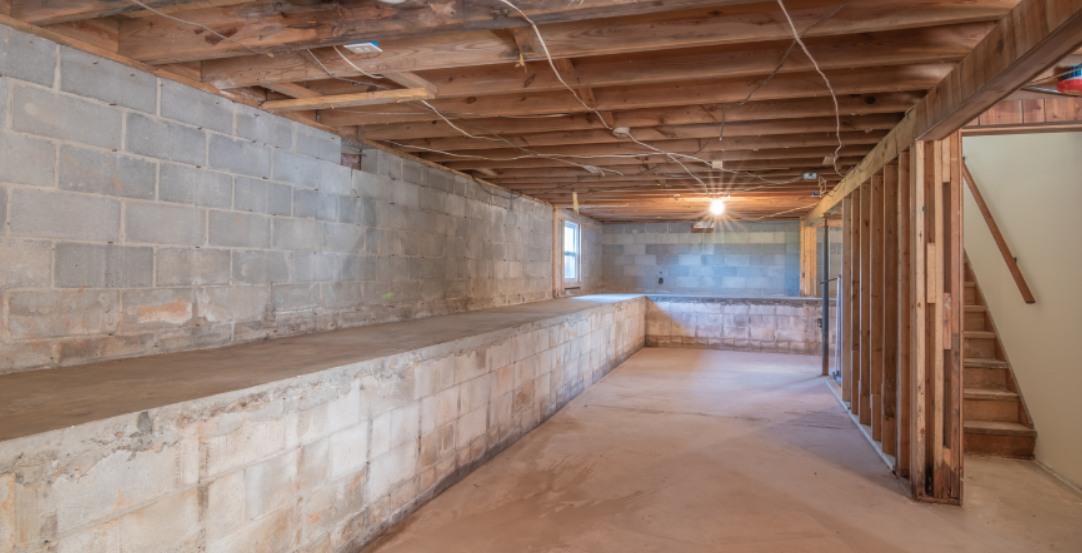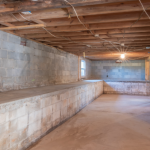Keeping Your Basement Dry: A Comprehensive Guide to Common Basement Waterproofing Techniques
A wet basement can be a homeowner’s worst nightmare. Water infiltration can lead to structural damage, mold growth, and a host of other problems. To safeguard your home and ensure a dry and healthy living environment, it’s essential to understand common basement waterproofing techniques. In this comprehensive guide, we will explore the most effective methods for keeping your basement dry, ensuring peace of mind and property protection.
1. The Importance of Basement Waterproofing
Structural Integrity: Excess moisture can weaken your home’s foundation and lead to cracks, settling, and even structural failure over time.
Health Concerns: Damp basements create ideal conditions for mold and mildew growth, which can contribute to respiratory problems and allergies.
Preservation of Belongings: A dry basement protects your stored belongings, preventing water damage to furniture, electronics, and personal items.
Energy Efficiency: A waterproofed basement helps maintain a consistent temperature, reducing energy costs associated with heating and cooling.
2. Identifying the Problem
Before you can tackle basement waterproofing, you must identify the source of water infiltration. Common causes include:
Surface Water: Rain, snowmelt, and runoff can seep into your basement through cracks or gaps in the foundation, windows, or doors.
Groundwater: High water tables, poor drainage, or hydrostatic pressure can force groundwater through your foundation walls and floor.
Condensation: Moisture can accumulate on basement walls and floors when warm, humid air meets cooler surfaces.
Plumbing Leaks: Leaky pipes, faulty fixtures, or damaged sewer lines can introduce water into your basement.
Poor Drainage: Inadequate or clogged exterior drainage systems can redirect water toward the foundation, causing seepage.
Understanding the source of the issue is critical in selecting the most suitable basement waterproofing technique for your specific situation.
3. Exterior Waterproofing
Excavation and Exterior Membrane Application
One of the most effective ways to prevent water infiltration is through exterior waterproofing. This method involves excavating the soil around your foundation and applying a waterproof membrane. The steps are as follows:
1. Excavation: A trench is dug around the foundation to expose the exterior walls. This can be labor-intensive and costly.
2. Cleaning and Repair: Foundation walls are cleaned, inspected for cracks, and repaired as necessary. Any existing drainage systems may be upgraded during this phase.
3. Application of Membrane: A waterproof membrane, often made of asphalt-modified bitumen, is applied to the exterior foundation walls. This membrane serves as a barrier that prevents water from infiltrating the walls.
4. Drainage System: A drainage system, such as French drains or weeping tiles, is installed at the base of the foundation walls to channel water away from the foundation.
Exterior waterproofing is highly effective, but it can be expensive due to excavation and labor costs. It is a long-term solution that can provide lasting protection against water infiltration.
4. Interior Waterproofing
Interior Drainage Systems
Interior drainage systems are an effective alternative when exterior waterproofing is not feasible or too costly. These systems manage water that has already infiltrated. Two primary types are used:
1. French Drains: A French drain is a sloped trench filled with gravel and a perforated pipe. It collects water entering the basement and directs it to a sump pump, which pumps the water outside. French drains can be installed beneath the basement floor or along the perimeter.
2. Interior Weeping Tiles: Weeping tiles are a network of perforated pipes that collect water and direct it to a sump pump. These can be installed along the interior perimeter of the foundation or under the basement floor.
Sump Pumps
Sump pumps are a critical component of interior drainage systems. They are installed in a pit on the basement floor, usually in the lowest part of the basement. When water accumulates in the pit, the sump pump activates, pumping the water away from the foundation and outside. Sump pumps can be equipped with battery backups to ensure they continue functioning during power outages.
Interior Waterproofing Membranes
In addition to exterior waterproofing, you can apply waterproofing materials to the interior walls and floors of your basement. Common options include.
1. Interior Sealants: These are coatings that can be applied to the interior walls to create a waterproof barrier. While they can be effective in preventing moisture intrusion, they may not be suitable for significant water infiltration.
2. Vapor Barriers: Vapor barriers are thick sheets of plastic placed on the interior walls or under the flooring to prevent moisture from seeping through.
Interior waterproofing techniques are often more cost-effective than exterior methods and are a viable solution when external excavation is not feasible. However, they primarily manage water that has already entered the basement rather than preventing its entry.
5. Crack Injection
Basement walls are prone to developing cracks over time due to settlement, hydrostatic pressure, or foundation movement. These cracks can allow water to seep into the basement. Crack injection is a targeted waterproofing technique used to seal these cracks. Here’s how it works:
1. Identifying Cracks: First, identify and evaluate the cracks in the basement walls to determine their cause and extent.
2. Preparing the Crack: Clean and prepare the crack for injection, often using epoxy or polyurethane materials.
3. Injection: Inject a waterproof material, typically epoxy or polyurethane, into the crack to seal it and prevent further water infiltration.
Crack injection is a cost-effective way to address isolated wall cracks and prevent water from entering through these openings. However, it may not be suitable for extensive water infiltration issues or larger structural concerns.
6. Drainage and Grading
Ensuring proper drainage around your home is essential to preventing basement water problems. Here are some related techniques:
Proper Grading: Properly grading the landscape around your home ensures that water flows away from the foundation. The slope should be directed away from the house to prevent water from pooling near the foundation walls.
Downspout Extensions: Extending downspouts away from the foundation and ensuring they are in good working order can help divert rainwater safely away from your home.
Window Well Drains: If you have window wells, installing drains can help manage water that collects around basement windows, preventing seepage.
7. Exterior Sealants
Exterior sealants can be applied to the exterior walls of your basement as a preventive measure against water infiltration. These sealants create a barrier against moisture and can help protect against surface water. It’s essential to have professionals apply them to ensure proper coverage and effectiveness.
Basement waterproofing is a critical aspect of maintaining your home’s integrity and safety. By understanding the sources of water infiltration and selecting the most appropriate waterproofing techniques, you can safeguard your basement against potential water damage and the associated risks. Whether through exterior or interior methods, proper drainage, or crack injection, taking the necessary steps to protect your basement will not only enhance your living environment but also save you from costly repairs down the road. If you’re unsure which method is right for your home, consult with a professional waterproofing contractor who can assess your specific situation and recommend the best course of action. Don’t wait until water infiltrates your basement; be proactive in protecting your home and your family’s well-being.












